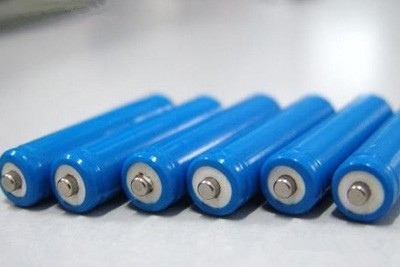Are Lithium Batteries Dangerous?
Jun 29, 2019 Pageview:1395
Although lithium-ion batteries are a little bit lower in their energy density, their system is, however, safe as it offers specific precautions that are to be met when discharging and charging.
Currently, lithium batteries are among the most popular and successful batteries available today. They are also safe. About two billion lithium cells are generated yearly.
However, have it in mind that lithium-ion cells along with cobalt cathodes actually hold twice the same energy as that of a nickel-based battery. It also holds about four times the energy of lead-acid batteries.
Furthermore, lithium-ion is actually a low maintenance system which is a big advantage that other batteries do not have.
Lithium cells do not have a memory, and this means that the battery does not need cycling that is scheduled for the sake of prolonging its life.
Also, the battery does not have any sulfation issue of lead acid that happens whenever the battery is kept without any form of periodic charge. Lithium batteries have a low self-discharge, and it is actually environmentally friendly.
In the same vein, the wish of most battery consumers has always been to have longer battery runtimes.
The battery manufacturers have reacted to this demand by packing up more materials that are active into battery cells as well as making both the separator and electrodes thinner.
This method has successfully allowed for the doubling of energy density since the emergence of lithium batteries to the scene in 1991.
However, these high energy densities do come at a high price as manufacturing techniques became more complex as cells became denser.
Safety Concerns With Li-on Batteries
It is no longer news that the safety concerns of lithium batteries have attracted much attention from the media. It has been noted over time that energy storage devices carry risk along with them.
This has been demonstrated since the 1800s, back when the steam engines started exploding and people were hurt. However, every battery carries a safety risk, and the battery manufacturers have been obligated to meet every safety demand.
However, for lithium batteries, they are safe, but with so many consumers running into millions using the batteries, failures are bound to arise.
In the year 2006, a one in over two hundred thousand breakdowns instantly triggered a recall of roughly six million lithium packs.
The makers of lithium cells; Sony, have pointed out that it is on rare occasions that microscopic metal particles come in contact with some other parts of the battery cell and this, in turn, leads to issues of a short circuit in the battery.
Consumers should note that lithium cells are actually safe and failures relating to heat are very rare. Manufacturers of lithium are able to attain this high level of reliability by the tier layers of protection that has been added. They include:
· Limiting the volume of active materials in a bid to attain a workable balance of safety and energy density.
· Inclusion of diverse safety mechanisms in the cell
· Addition of electronic protection circuit within the battery pack
Furthermore, the protection devices in the lithium pack work in a way that the PTC device that is built into the lithium cell actually takes on a protective role to inhibit surges of high current.
Then, the CID; circuit interrupt device opens up the electrical path in case an excessively high voltage lifts the pressure of the internal cell to 10 bar.
Also, the safety vent allows for a regulated release of gas should there be a swift increase in the pressure of the cell.
Additionally, an electronic protection circuit that is external to the battery cells opens up a sturdy state switch should the charge voltage amount to 4.30V. There is a fuse that cuts the flow of current if the skin temperature of the battery cell reaches 90°C.
In a bid to stop the battery from over-discharging, its control circuit actively cuts off the path of the current at roughly 2.50V.
Risks And Side Effects Of The Underestimated Damages Of lithium-ion batteries
Even with its high energy density and reduced self-discharge rate, lithium cells still provide some of the greatest advantages when compared to rechargeable and conventional batteries.
Actually, operator mistakes and structure faults often lead to explosions and fires sometimes, which results in injuries and property damages. All these have made lithium batteries to be under the microscope due to prospective fire linked incidents.
There have been risks associated with lithium batteries, and many cases have been reported. There was a time when Dell; the United States based computer producer had to recall millions of Dell notebook batteries with cells that contain lithium.
Also, in 2000, Dell replaced roughly twenty-seven thousand notebook batteries after it was made known that the lithium batteries tend to catch fire.
The early quarters of 2013 also had Boeing reporting two shocking events that are in connection with lithium cells. There were also issues during the production of Tesla cars in the United States.
This was as a result of a Tesla S hitting a tree at high speed mad the electrical energy storage did not water time in igniting resulting in the entire car getting burnt. This occurred in Indianapolis.
After so many issues of battery fires, Samsung had to pull out all of its stops. At first, the company stopped the generation and later on the terminated Galaxy Note7.
For Honeywell group, they instantly ceased the generation and delivery of about two of their highly portable multi-gas detection systems when customers made reports of their battery cells overheating.
For ICAO; international civilspecial organization, they also think that man, machine, and the environment's safety is at major risks at the hands of lithium batteries.
It stopped the transportation of lithium batteries due to a fire hazard caused by lithium batteries.
Currently, we are all aware of the risk of lithium Technology and have simply underestimated it for years or just ignored it all. The bigger the lithium battery, the stronger its chemical reactions are.
Even the battery size of a mobile cell phone is sufficient enough to form flames.
What We Should Do For lithium ion battery Safety
The only safety measures we can take currently are to:
· The lithium batteries should never be used for purposes that have not been specified. They should only be used for civilian purposes and not for the manufacturing of mass destruction weapons likespecials
· The batteries should never be heated, disassembled or disposed of in a fire as doing this causes damage to the gas release vent, resulting in a fire
· Always ensure that the polarities of the batteries are in the correct position whenever you are inserting them into any equipment.
To Sum It Up
Lithium batteries should always be kept out of the reach of kids because if they are swallowed or the leaked liquid is ingested into the body, it is highly dangerous. The batteries should never be charged with either high current or a high voltage.
- Prev Article: How do you deal with lipo battery explosion?
- Next Article: Do You Use AAA Lithium-Ion Batteries?
Leave Message
Hottest Categories
-
Hottest Industry News
-
Latest Industry News











